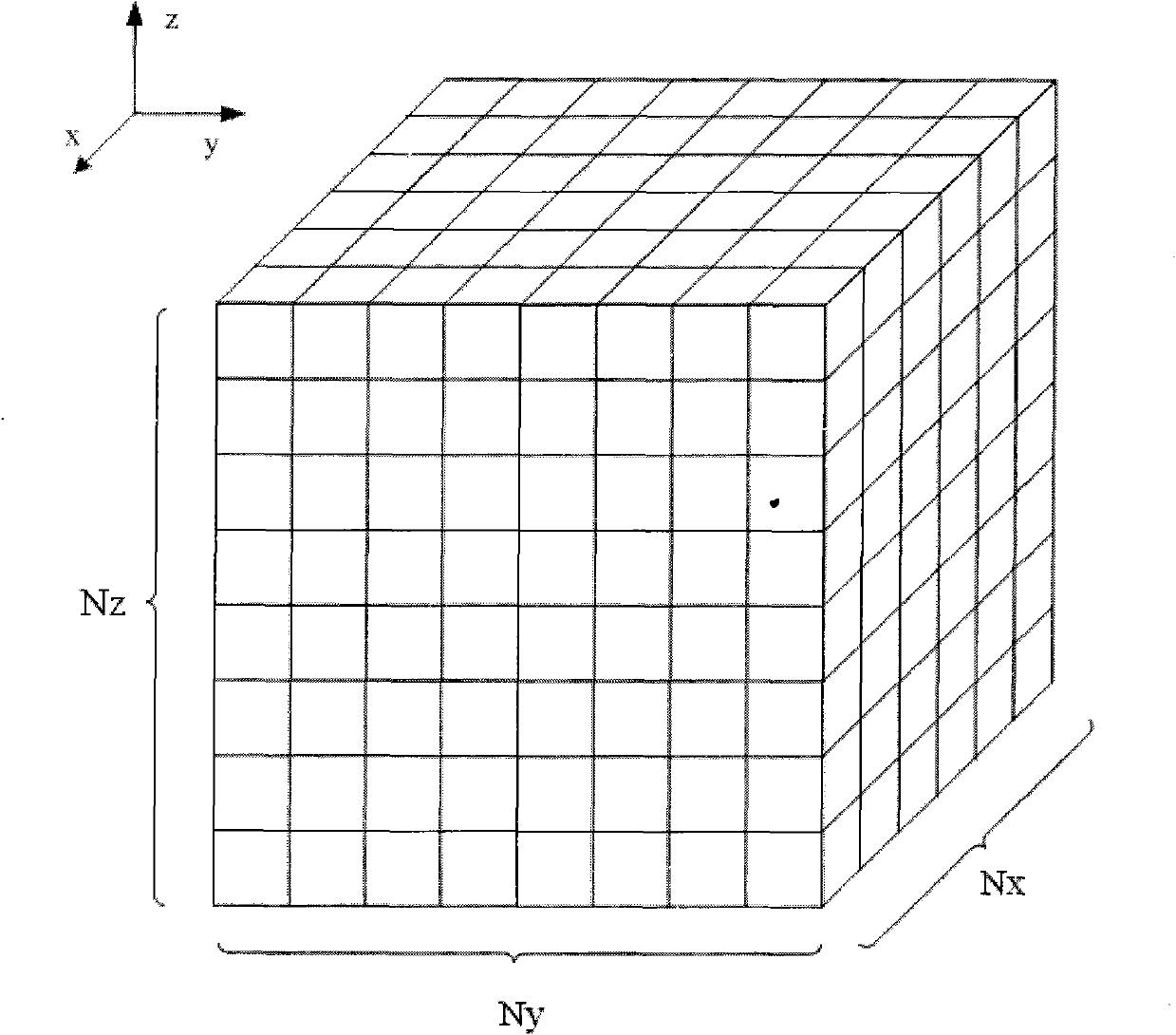Method of cluster computer for simulating electromagnetic wave propagation
An electromagnetic wave and computer technology, applied in the field of electromagnetic wave propagation, can solve problems such as the huge number of variables, increasing the number of simulation iteration steps, and rough grid points
- Summary
- Abstract
- Description
- Claims
- Application Information
AI Technical Summary
Problems solved by technology
Method used
Image
Examples
Embodiment 1
[0168] In this embodiment, the polarization characteristics of backscattered light are studied when polarized light is incident on a biological tissue model, so as to provide parameters for the polarization gating technology in optical detection of biological tissue. The biological tissue model uses a discrete scatterer model, such as Figure 7 As shown, that is, in a certain space volume range (l x × l y × l z ) medium microspheres of uniform size are randomly distributed. The radius of the microsphere is 1 μm, and the refractive index is 1.59; the space outside the microsphere is water, and the refractive index is 1.33. The incident light is a plane wave linearly polarized in the x direction input along the z direction, and its wavelength in free space is 785nm.
[0169] In this embodiment, four groups of tissue models of different sizes were simulated. The spatial dimensions of each group of models, the number of microspheres in the model, the width of the grid during c...
Embodiment 2
[0191]The embodiment 2 simulates and calculates the enhanced backscattering phenomenon when the light wave is incident on the biological tissue model. The method for constructing the biological tissue model in this embodiment is consistent with that in Embodiment 1, and each parameter is the same as that of the second group of models in Embodiment 1. In this embodiment, in order to suppress the speckle generated by the coherent light and the biological tissue model, the results of incident light of different frequencies are averaged.
[0192] Figure 10 It is the flowchart of the present embodiment 2:
[0193] (1) Generate tissue model: randomly generate microsphere positions within a limited space to ensure that all microspheres do not overlap each other and are evenly distributed in space;
[0194] (2) set i=1;
[0195] (3) Calculate the incident light frequency of the i-th simulation: f i =(0.95+0.005(i-1))f 0 , where f 0 is the wavelength of the light wave with a wav...
PUM
 Login to View More
Login to View More Abstract
Description
Claims
Application Information
 Login to View More
Login to View More - Generate Ideas
- Intellectual Property
- Life Sciences
- Materials
- Tech Scout
- Unparalleled Data Quality
- Higher Quality Content
- 60% Fewer Hallucinations
Browse by: Latest US Patents, China's latest patents, Technical Efficacy Thesaurus, Application Domain, Technology Topic, Popular Technical Reports.
© 2025 PatSnap. All rights reserved.Legal|Privacy policy|Modern Slavery Act Transparency Statement|Sitemap|About US| Contact US: help@patsnap.com



